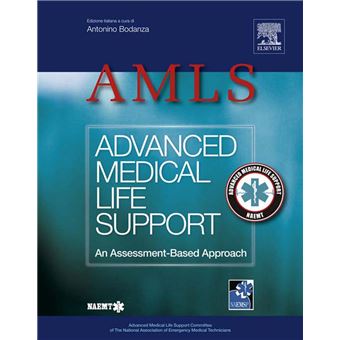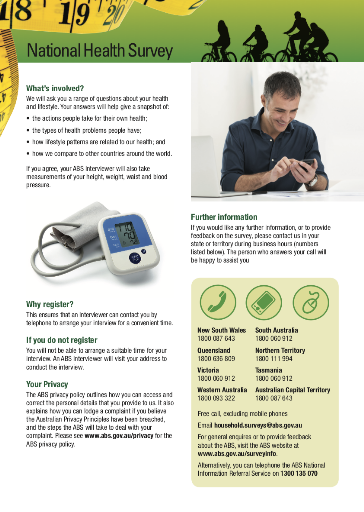
The PAN Foundation today opened a new patient assistance program for Medicare patients with acute myeloid leukemia (AML). Qualifying patients are eligible to receive grants for their out-of-pocket costs associated with their prescribed AML medications.
Full Answer
How much is expectancy of life of AML patient?
The median time from diagnosis to death was 5.5 months (range 0.7-50.4). The majority (82%) had active AML at time of death. Other causes of death included transplant related complications (8%), sepsis (4%), bleeding (2%), or other (4%) causes. Palliative care consultation occurred in 35% of the cases.
What is the life expectancy with AML?
The prognosis for adults is not as good. Only 25 to 35 percent of adults live 5 years or longer. Acute myeloid leukemia (AML): With proper treatment, most people with this cancer can expect to go into remission. About 80 percent who go into remission will do so within 1 month of therapy.
Can AML patients be cured?
Some other forms of AML have cure rates as high as 50 percent, 60 percent, 70 percent in the right setting. Sometimes we can cure patients with a stem cell transplant fairly reliably. So, we are very, very hopeful about our ability to continue to make progress and cure more and more and more of these patients. That’s the future that we see.
What are signs of dying from AML?
These may include:
- cool, dry skin
- slow or labored breathing
- blurry vision
- decreased urination or incontinence
- restlessness or involuntary muscle movements
- decreased movements or weakness
- loss of appetite and decreased fluid intake
- increased drowsiness and sleepiness
- changes in heart rate
- signs of bleeding, such as under the skin (petechiae) or from the nose

How can I help someone with acute myeloid leukemia?
Caring for a loved one with AMLProviding support and encouragement.Talking with the health care team.Giving medications.Helping manage symptoms and side effects.Coordinating medical appointments.Providing a ride to and from appointments.Assisting with meals.Helping with household chores.More items...
What is the life expectancy of a AML patient?
The 5-year survival rate tells you what percent of people live at least 5 years after the cancer is found. Percent means how many out of 100. The 5-year survival rate for people 20 and older with AML is 27%. For people younger than 20, the survival rate is 69%.
What is standard of care for AML?
There is no standard treatment for refractory or recurrent acute myeloid leukemia (AML). Treatment depends on the subtype of AML and may include the following: Chemotherapy. Targeted therapy with gilteritinib, enasidenib, or ivosidenib.
What foods to avoid if you have AML?
Try to limit or avoid unhealthy foods like sweets, high-fat meats, and salty snacks. Also, drink plenty of fluids so you don't get dehydrated, especially if you're vomiting or you have diarrhea. Ask your doctor if you should avoid alcohol, which can interfere with some chemotherapy drugs.
What causes death in AML patients?
Acute myeloid leukemia (AML) is one of the most frequent myeloid malignancies. In patients with the disease, death often occurs due to complications of marrow failure, such as sepsis or significant hemorrhage. Rarely, undiagnosed and rapid evolving cases may present with fatal multi-organ failure.
What is the final stage of AML?
During end-stage AML, the focus shifts from treatment to providing comfort and maintaining quality of life. Individuals at this stage present with several symptoms that indicate that death could be imminent. Being aware of these symptoms can help caregivers offer the best care for the person.
Does AML qualify for disability?
A diagnosis of acute lymphoblastic leukemia (ALL), acute myeloid leukemia (AML), or chronic myelogenous leukemia (CML) automatically qualifies you for SSDI benefits. Those are considered to be the "bad" leukemia's by Social Security.
Why is AML so hard to treat?
“Acute myeloid leukemia progresses rapidly with high intensity, and because it is a disease of the bone marrow, it interferes with the production of normal blood cells that are essential for various normal functions,” explains Jalaja Potluri, M.D., medical director, oncology development, AbbVie.
How aggressive is AML leukemia?
AML is an aggressive type of cancer that can develop rapidly, so treatment usually needs to begin soon after a diagnosis is confirmed. Chemotherapy is the main treatment for AML. It's used to kill as many leukaemia cells in your body as possible and reduce the risk of the condition coming back (relapsing).
Can you live a full life with AML?
Generally for all people with AML: 15 out of 100 people (15%) will survive their leukaemia for 5 years or more after being diagnosed.
Can you live a normal life after AML?
Approximately 60 to 70% of adult patients (aged 18-65 years) will achieve complete remission (CR), with 50-70% of first CR patients relapsing within 3 years. Approximately 22.6% of adult AML patients survive to five years (3).
Can you fully recover from AML?
Most often, acute myeloid leukemia (AML) will go into remission after the initial treatment. But sometimes it doesn't go away completely, or it comes back (relapses) after a period of remission. If this happens, other treatments can be tried, as long as a person is healthy enough for them.
Can you live a full life after AML?
Approximately 60 to 70% of adult patients (aged 18-65 years) will achieve complete remission (CR), with 50-70% of first CR patients relapsing within 3 years. Approximately 22.6% of adult AML patients survive to five years (3).
Can you fully recover from AML?
Most often, acute myeloid leukemia (AML) will go into remission after the initial treatment. But sometimes it doesn't go away completely, or it comes back (relapses) after a period of remission. If this happens, other treatments can be tried, as long as a person is healthy enough for them.
How fast can AML progress?
According to the National Cancer Institute, it accounts for 1.1% of all cancer cases in the U.S., and an estimated 20,240 people in the U.S. were diagnosed with it in 2021. In people with AML, symptoms usually develop and progress rapidly over the course of a few weeks.
What is the 10 year survival rate for AML?
Of the younger CBF-AML patients who achieved CR1, 41.6% were disease-free for 10 years, as were 20.7% of patients with CN-AML and 15.9% of patients with other abnormal karyotypes (Figure 1).
About the Disease
Acute myeloid leukemia (AML), also known as acute myeloblastic leukemia and acute myelogenous leukemia, is a type of cancer of the blood and bone marrow with excess immature white blood cells. It is a cancer that affects the circulatory system. Subtypes include acute promyelocytic leukemia.
Patients can receive free education and support services
The Aplastic Anemia & MDS International Foundation provides education and support to patients and families living with aplastic anemia, myelodysplastic syndrome, paroxysmal nocturnal hemoglobinuria, and related bone marrow failure diseases.
Is there a patient assistance program for AML?
Washington, DC, (June 16, 2017) – The Patient Access Network (PAN) Foundation today opened a new patient assistance program for Medicare patients with acute myeloid leukemia (AML). Qualifying patients are eligible to receive grants for their out-of-pocket costs associated with their prescribed AML medications.
Do you have to have Medicare to get AML treatment?
Eligible patients must be getting treatment for AML; must reside and receive treatment in the United States; must have Medicare health insurance; and the medication for which they seek assistance must be covered by Medicare and must treat the disease directly.
What is cancer care?
Cancer Care provides free, professional support services for people affected by acute myeloid leukemia (AML), as well as AML treatment information and additional resources .
What is the number for a social worker for cancer?
Oncology social workers help you cope with the emotional and practical challenges of acute myeloid leukemia. Contact us at 800‑813‑HOPE (4673) or [email protected]. Learn more about counseling. Case Management. Learn more about how Cancer Care Case Management can help you address barriers to care.
How is AML treated?
Children with AML receive slightly different treatments and are treated by pediatric oncologists. The first treatment phase is induction therapy to try to bring about remission. Remission means your child shows no symptoms or signs of the disease and that the cancer cells can’t be detected in the marrow or the blood.
How rare is AML?
Close to 20,000 Americans will receive an AML diagnosis this year. The disease accounts for about 1 in 3 adult leukemia diagnoses. Still, AML is relatively rare. Only about 1% of all cancers are AML.
What is the best treatment for acute myeloid leukemia?
Rarely, children get this cancer. AML starts in bone marrow and quickly spreads to the lymph nodes, organs, spine and brain. Chemotherapy is the top treatment. Some people get stem cell transplants. AML often comes back, and the disease may require lifelong treatment.
What is APL diagnostic test?
Diagnostic tests tell providers the subtype. This information affects treatments. For example, acute promyelocytic leukemia (APL) is a subtype of AML. APL has genes that make it more sensitive to chemotherapy, and therapy for APL is distinct from AML treatments.
How long does chemo last for leukemia?
Chemotherapy: Your child may continue to get chemotherapy for several months, and this sometimes includes intrathecal chemo (but this is mostly for acute lymphocytic leukemia/ALL). Children typically don’t need to continue with chemotherapy after the disease is in remission after completing consolidation chemotherapy cycles.
Where do leukemia cells build up?
Leukemia cells (blasts) can build up in bone marrow, crowding out healthy cells. These diseased cells quickly move into your blood and other parts of your body.
Can children get leukemia?
Children can also get AML. About 1 in 4 childhood leukemia diagnoses are AML.
What is AML in medical terms?
About Acute Myeloid Leukemia. Acute Myeloid Leukemia (AML) is a malignant disease of the bone marrow in which the DNA of a developing stem cell in the bone marrow is damaged. The damaged cell becomes a leukemic cell and multiplies into leukemic blasts, which block the production of normal cells. AML is defined by myeloblasts making up greater ...
What is the most common form of leukemia in adults?
AML is the most common acute leukemia in adults, accounting for approximately 80% of new acute cases, and is most common in adults older than 65. AML is the second most common form of leukemia in children during the first two years of life and during the teenage years.
What are the risk factors for myelodysplastic syndrome?
Acute myelogenous leukemia is also known as acute myeloid leukemia, acute myeloblastic leukemia, acute granulocytic leukemia and acute nonlymphocytic leukemia.”.
Need help finding something?
OK, we’ll help you find what you’re looking for. How would you describe yourself?
Take your time
We compiled a lot of great resources. Here are some topics that we recommend exploring.
Our Eligibility page can help you out
At this page, you can check if you meet the eligibility criteria for our disease programs.
We have programs for a variety of diseases
The following page will show you the list of disease states we cover, as well as the disease programs we have available.
We exist to help our patients
Click the button below to learn why we serve our patients, how we do it, and who makes it happen
Find out how the process works
By clicking below, you’ll see what you can expect as a patient after you apply and get approved.
Find out how the process works
Learn more about how TAF comes together with donors and providers to help our patients.
What is the LLS program?
The Leukemia & Lymphoma Society (LLS) offers the following financial assistance programs to help individuals with blood cancer. For a summary of all LLS Patient Financial Assistance Programs, click here.
What is Susan Lang's pre-car T cell?
Susan Lang Pre CAR T-cell Therapy Travel Assistance Program provides assistance for treatment-related transportation and lodging expenses for patients who are being evaluated to receive CAR T-cell therapy as either standard treatment or a clinical trial. Eligible patients receive a $2,500 grant.
